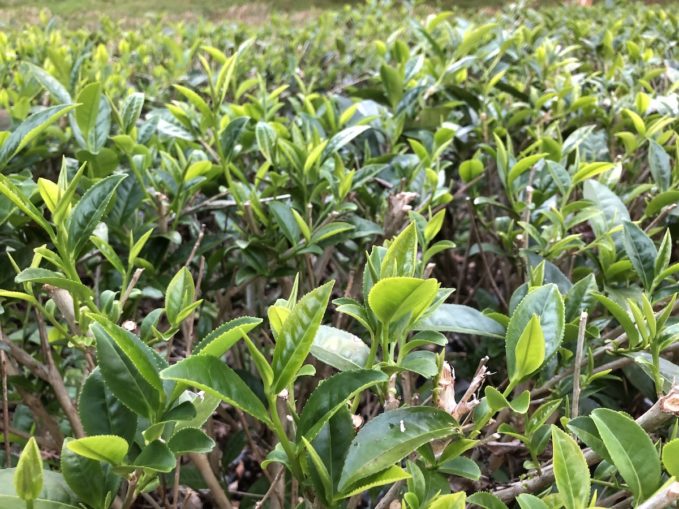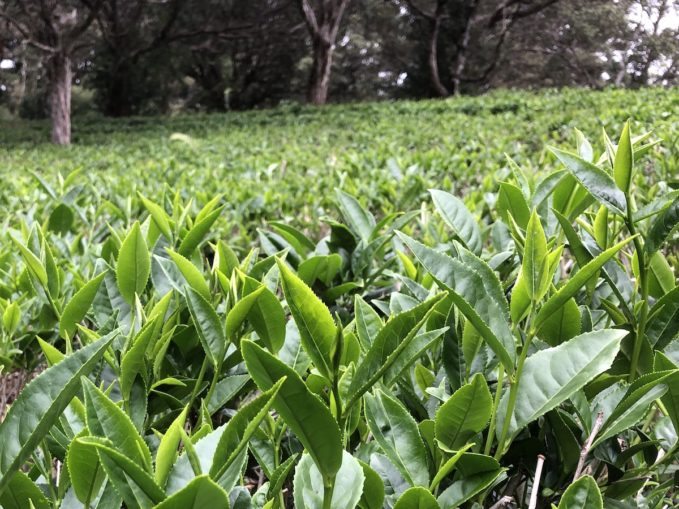Discover Tea
Two leaves and a bud… for quality green tea harvest
“Two leaves and a bud” is often a golden standard of tea picking and used as an indicator of tea quality, but there are so many ways you can look at two leaves and a bud. How do they affect aroma, flavor and quality? or two leaves and a bud actually better than three leaves and a bud or just plain bud harvest?
Two leaves and a bud is a tender tip
If you have done any tea picking, you would intuitively know that two-three leaves and a bud is a natural choice. New growth from tea plants is tender. The tips snap easily much like asparagus. You just bend it and “Snap!” The stem right below two leaves and a bud is very tender and almost has no fiber. When you try to increase harvest quantity and start picking 3, 4 or even 5 leaves and a bud, you will notice that the stem is hard and when we process the tea, it shows significant loss in quality.
Vigorous flush makes three leaves and a bud possible

Sometimes new growth is very vigorous and shoots up strong, the rate of growth is fast and stays tender much longer. You can go up to 3-4 leaves and a bud without significant quality loss. This is often more common in younger bushes and rich virgin soil. Also, some cultural practice such as longer rest period, deep pruning to reduce tip density, and nitrogen fertilizer can increase vigor.
Tea bushes in shaded area and cool climate also tend to keep the flush tender for a longer period of time. Forested area and high mountain environment are conducive to more tender flush. Leaves and stems remain tender and harvest can often go three leaves and a bud without significant quality loss. The leaves are also naturally high in theanine and other amino acids.
Read another article -> Theanine and Spring Green Tea

Early spring flush remain tender
If you take a stroll in early spring when the air is just starting to warm up, many trees and bushes are just bursting with energy. All the energy stored from winter dormancy turns into new growth. Tea bushes respond in the same way. Cool air also helps keep the tips tender for more expended picking season.
Tea farmers know that the optimal harvest period last 5-7 days in spring whereas optimal summer harvest period 4-5 days. This allows us to plan around rain and other weather conditions.

There are many cultural practices as well as environmental conditions that help produce good quality flush. Harvest timing, soil conditions, and even weather can influence how fast spring tips grow and tender they remain. Naturally suitable environment can affect tea quality at more fundamental level while many cultural practices such as types and amount of fertilizers used can keep tender flush but alter aroma and flavor in more unintended ways.


